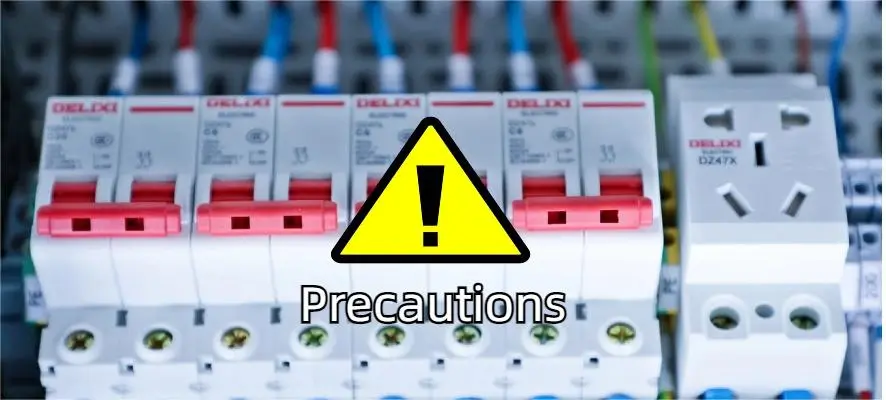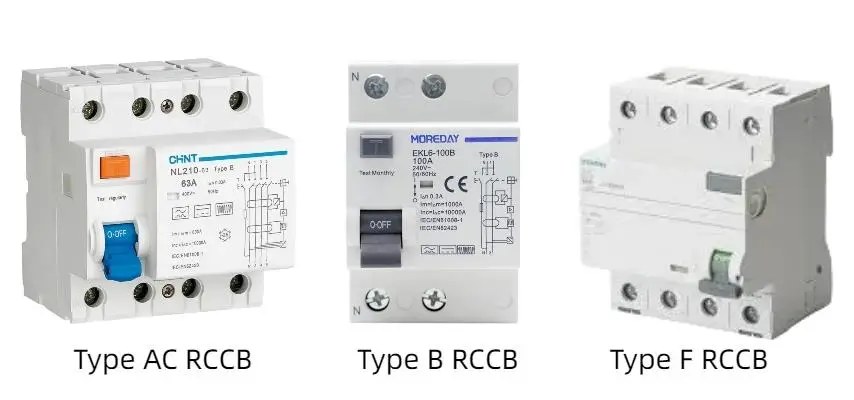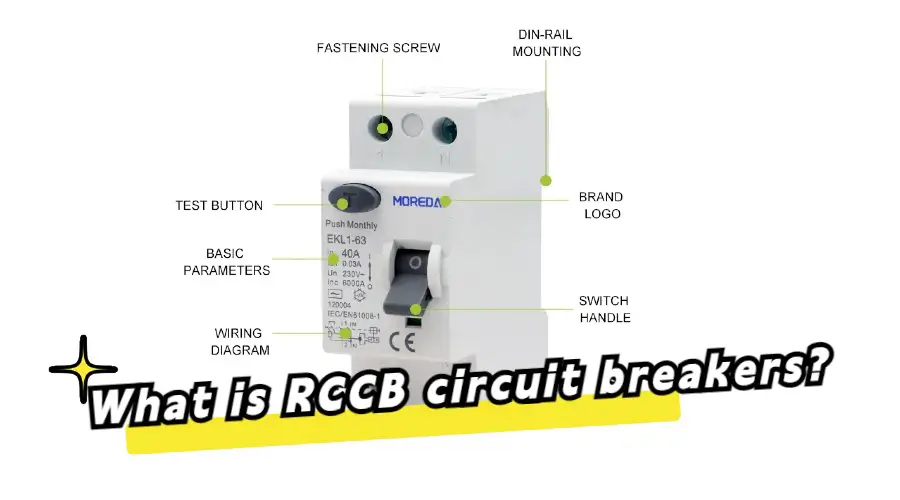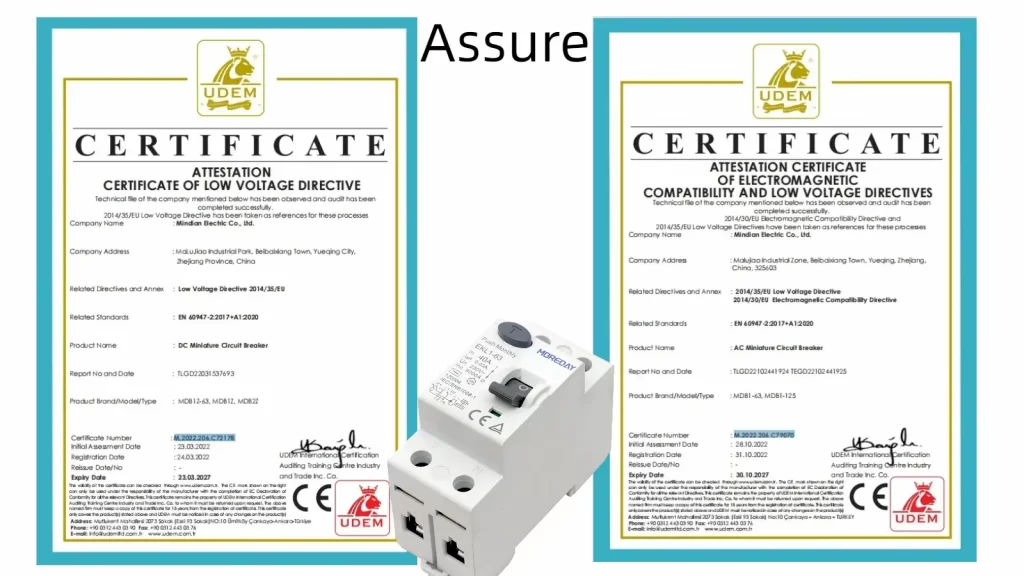Introduction
Welcome to our expert guide on RCCB circuit breakers! If you’re looking to enhance the safety and protection of your electrical circuits, you’ve come to the right place. In this article, we will delve into the world of RCCB circuit breakers and provide you with valuable insights and information.
RCCB circuit breakers, also known as residual current circuit breakers, are essential devices that play a crucial role in detecting and preventing electrical leakages. These leakages, caused by factors such as faulty appliances or damaged insulation, can potentially lead to electric shocks and pose serious risks to both people and equipment.
In this comprehensive guide, we will explore the working principles of RCCB circuit breakers and highlight their numerous benefits. We will also discuss the different types of RCCB circuit breakers available in the market and provide you with valuable considerations for choosing the right one for your specific needs.
Furthermore, we will delve into the installation and maintenance aspects of RCCB circuit breakers, ensuring that you have all the necessary information to make informed decisions and keep your electrical systems safe and efficient.
So, whether you’re a homeowner, electrician, or simply interested in electrical safety, join us on this journey as we uncover the world of RCCB circuit breakers. Let’s dive in and empower ourselves with the knowledge to protect against electrical hazards and ensure peace of mind.
What is an RCCB Circuit Breaker?
An RCCB circuit breaker, also known as a residual current circuit breaker, is a crucial component in electrical systems that provides protection against electrical leakages and potential electric shocks. Unlike traditional circuit breakers, an RCCB is designed to detect and interrupt current leakages caused by insulation faults, ground faults, and other electrical hazards.
The main function of an RCCB is to monitor the balance between the current flowing through the live wire and the current returning through the neutral wire. If there is any difference in these currents, the RCCB immediately trips off the circuit, cutting off the electricity supply and preventing any potential harm.
RCCB circuit breakers offer several benefits, including improved safety, early detection of electrical problems, increased energy efficiency, enhanced reliability, and easy installation and maintenance. They are essential in protecting both people and appliances from electric shock and electrocution.

There are different types of RCCB circuit breakers available, including those with adjustable sensitivity levels and various rated currents. When choosing an RCCB, it is important to consider factors such as the desired sensitivity level, the rated current required for the electrical system, and the specific needs of the installation.
Proper installation and regular maintenance of RCCB circuit breakers are crucial to ensure their effectiveness and reliability. It is recommended to consult a qualified electrician for the installation and to follow the manufacturer’s guidelines for maintenance.
In conclusion, an RCCB circuit breaker is an essential safety device that provides protection against electrical leakages and potential electric shocks. Its ability to detect and interrupt current imbalances makes it a crucial component in electrical systems, ensuring the safety of both people and appliances.
How Does an RCCB Circuit Breaker Work?
So, you’ve heard about the importance of having an RCCB circuit breaker installed in your home, but how exactly does it work? Let’s dive into the inner workings of this essential electrical safety device.
At its core, an RCCB circuit breaker is designed to detect and interrupt current leakage in your electrical system. It acts as a vigilant guardian, constantly monitoring the flow of electricity and stepping in when it detects any imbalances.
When everything is functioning normally, the current flowing through the live (phase) wire should be equal to the current returning through the neutral wire. However, if there is a slight difference in the values between these two wires, the RCCB’s sensor kicks into action.
The RCCB’s sensor is highly sensitive and can detect even the smallest residual currents. When it detects a difference in current values, it quickly trips off the circuit, cutting off the electricity supply in a matter of fractions of a second.

This rapid response is crucial because it prevents any potential damage to both people and electrical equipment. By swiftly shutting off the circuit, the RCCB ensures that any potential electric shocks or accidents are avoided.
Unlike its outdated counterpart, the Earth Leakage Circuit Breaker (ELCB), which solely relies on earth wire readings, the RCCB takes into account the current passing through both the live and neutral wires. This makes it a more reliable and effective safety device.
So, by installing an RCCB circuit breaker in your home, you’re adding an extra layer of protection against electrical hazards. It’s a small but mighty device that can make a significant difference in ensuring the safety of your household.
Remember, when choosing an RCCB circuit breaker, consult with a trusted electrician to find one that meets your specific needs and provides the appropriate level of protection. Safety should always be a top priority, and an RCCB circuit breaker is an essential tool in achieving it.
Benefits of Using an RCCB Circuit Breaker
When it comes to electrical safety, there is no room for compromise. That’s why using an RCCB circuit breaker in your electrical system comes with a range of benefits that can provide you with peace of mind and protect your loved ones and property. Here are some of the key advantages of using an RCCB circuit breaker:
Enhanced Safety: An RCCB circuit breaker is designed to detect and disconnect the circuit immediately when it detects a fault or leakage current. This means that in the event of an electrical fault, the RCCB will cut off the power supply, preventing any potential electric shock or fire hazard.
Protection Against Electrical Faults: With its ability to detect even small changes in residual current, an RCCB circuit breaker can provide effective protection against electrical faults. Whether it’s a sudden earth fault or a leakage current, the RCCB will trip the circuit, keeping you and your property safe.
Easy Installation and Maintenance: Installing an RCCB circuit breaker is a straightforward process that can be done by a qualified electrician. Once installed, it requires minimal maintenance, ensuring hassle-free operation and long-term reliability.
Versatile Applications: RCCB circuit breakers are suitable for a wide range of applications, from residential homes to commercial buildings and industrial settings. They can be used to protect circuits in various electrical systems, providing safety and peace of mind in any environment.
Compliance with Safety Standards: RCCB circuit breakers are designed and manufactured to meet stringent safety standards. By using an RCCB circuit breaker, you can ensure that your electrical system is in compliance with industry regulations and standards.
In conclusion, using an RCCB circuit breaker offers a range of benefits, including enhanced safety, protection against electrical faults, easy installation and maintenance, versatile applications, and compliance with safety standards. By investing in an RCCB circuit breaker, you are taking a proactive step towards safeguarding your electrical system and ensuring the safety of your loved ones and property.
Types of RCCB Circuit Breakers
When it comes to RCCB circuit breakers, there are several types available in the market to suit different needs and applications. Here, we will explore some of the most common types:
Standard RCCB: This is the most basic type of RCCB circuit breaker, designed to provide protection against electrical leakage currents. It is suitable for general use in residential and commercial buildings.
Type A RCCB: This type of RCCB circuit breaker offers enhanced protection by detecting both sinusoidal AC and pulsating DC residual currents. It is commonly used in environments where there is a higher risk of DC residual currents, such as in industrial settings.
Type AC RCCB: This RCCB circuit breaker is designed to trip when there is a fault in the sinusoidal AC residual current. It is suitable for general use in residential and commercial buildings.
Type F RCCB: This type of RCCB circuit breaker is specifically designed to detect and protect against more complex forms of residual current, including high-frequency AC and DC residual currents. It is commonly used in sensitive environments where there is a need for advanced protection, such as in medical facilities or laboratories.
Type B RCCB: This RCCB circuit breaker offers the highest level of protection, capable of detecting all types of residual currents, including AC, DC, and high-frequency AC currents. It is commonly used in critical applications where the highest level of safety is required, such as in data centers or power plants.

It is important to choose the right type of RCCB circuit breaker based on the specific requirements of your application. Consulting with a qualified electrician or electrical engineer can help ensure that you select the most suitable type for your needs. Remember, safety should always be the top priority when it comes to electrical installations.
Considerations for Choosing an RCCB Circuit Breaker
When it comes to choosing the right RCCB circuit breaker for your electrical system, there are several important considerations to keep in mind. These considerations will ensure that you select a reliable and effective RCCB that meets your specific needs and provides optimal protection for your home or business.
Sensitivity: One of the key factors to consider is the sensitivity of the RCCB circuit breaker. The sensitivity refers to the amount of leakage current that will trigger the RCCB to trip and disconnect the circuit. It is crucial to choose an RCCB with the appropriate sensitivity level to ensure it can detect even the smallest leakage currents and provide timely protection.

Rating: The rating of the RCCB circuit breaker is another important consideration. The rating refers to the maximum current that the RCCB can handle without tripping. It is essential to choose an RCCB with a rating that matches the electrical load of your system to ensure optimal performance and avoid unnecessary tripping.
Type: RCCB circuit breakers come in different types, such as Type A, Type AC, and Type F. Each type has specific characteristics and is designed to protect against different types of faults. It is important to understand the specific requirements of your electrical system and choose the appropriate type of RCCB that provides the necessary protection.
Brand and Quality: Choosing a reputable brand and high-quality RCCB circuit breaker is essential for ensuring reliability and durability. Look for trusted brands that have a proven track record in the industry and offer reliable products. Investing in a high-quality RCCB will provide long-lasting protection and peace of mind.
Installation and Compatibility: Consider the installation requirements and compatibility of the RCCB circuit breaker with your existing electrical system. Ensure that the RCCB is compatible with the voltage and frequency of your system and can be easily installed by a qualified electrician.
By considering these factors when choosing an RCCB circuit breaker, you can ensure that you select the right one for your specific needs and provide optimal protection for your electrical system. Remember to consult with a trusted electrician for expert advice and assistance in selecting and installing the appropriate RCCB circuit breaker.
Installation and Maintenance of RCCB Circuit Breakers
Installing and maintaining an RCCB circuit breaker is a crucial step in ensuring the safety and protection of your electrical system. Here are some key points to keep in mind:
Professional Installation: It is highly recommended to hire a licensed electrical worker to install your RCCB circuit breaker. They have the expertise and knowledge to properly connect and configure the device, ensuring its optimal performance.

Proper Wiring: During installation, it is essential to ensure that the wiring is done correctly. The RCCB should be connected to the main electrical panel, and all circuits should be properly labeled and connected to the appropriate terminals.
Regular Testing: After installation, it is important to regularly test the RCCB circuit breaker to ensure its proper functioning. This can be done by pressing the test button on the device, which should cause it to trip and cut off the power supply. If the RCCB does not trip, it may indicate a fault and should be inspected by a professional.
Maintenance and Inspection: Periodic maintenance and inspection of the RCCB circuit breaker are essential to identify any potential issues or faults. This can be done by a licensed electrical worker who will check for loose connections, damaged wiring, or any signs of wear and tear.
Replacement and Upgrades: If your RCCB circuit breaker is outdated or no longer functioning properly, it is important to replace it with a new one. Upgrading to a more advanced model can provide enhanced protection and better performance.
Remember, the installation and maintenance of an RCCB circuit breaker should always be done by a qualified professional. Regular testing and inspections will ensure the continued safety and reliability of your electrical system.
Derek Ke
Hey, I’m Derek Ke, the founder of Moredaydc.com, an expert in solar electrical products and ev charging.
In the past 15 years, we have helped 60 countries and nearly 500 customers (such as farms, residences, industrial and commercial) solve new energy and green power problems. This article aims to share more knowledge about solar electricity and new energy with everyone, so that green electricity can enter every home.
Common Queries
Frequently Asked Questions
please feel free to contact us.
A: Charging times vary based on factors like charger type and vehicle battery capacity. On average, fast chargers can provide a significant charge in 30 minutes.
A: Unlike regular circuit breakers, which protect against overcurrent and short circuits, an RCCB specifically protects against earth faults. It does this by measuring the imbalance between live and neutral wires, tripping the circuit when it detects a leakage current (typically 30mA to 300mA).
A: No, RCCBs are designed specifically to protect against earth leakage currents. They do not provide protection against overloads or short circuits – for that, a combination with MCBs (Miniature Circuit Breakers) or fuses is necessary.
A: RCCBs are commonly used in domestic, commercial, and industrial electrical systems where there is a risk of electric shock due to earth faults, especially in damp environments like bathrooms and kitchens.
A: An RCCB is installed in the distribution board of an electrical system. It is connected to both the live and neutral wires, monitoring the current balance between them.
Make Electricity Available To All People




